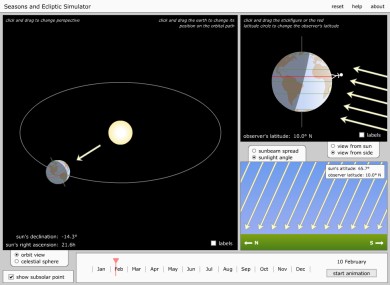Convection currents occur when there are differences in density. Most of the time this is caused by heat changing the density of a substance.
When a substance gets hot, the molecules start moving faster and spread out. The substance becomes less dense and rises. When it rises away from the heat, it cools. Then it falls back down where it is heated once again. This is an example of a convection current.
Convection currents occur everywhere! In the air (sea and land breezes are perfect examples), in the earth's crust (that is what makes plates move), and in the ocean when warm water or less salty water rises.
Before creating our convection current, we were reminded about density while making a puddle out of different temperatures of water.
First we poured in our yellow room temperature water.
Not really that exciting.
Next, we poured blue cold water in! We remembered that cold water is more dense than room temperature water, so we predicted it would sink to the bottom.
It looked a lot like the cold front we created only different colors!
Lastly, we poured our red, hot water down. Remembering that hot water is less dense, we predicted it would be on top.
It was!
After cleaning up our rainbow puddle, it was time to put our knowledge to the test. We started with a tub full of room temperature water. We took a few drops food coloring and put it on the bottom of the tub. Then we created a hot spot underneath the food coloring.
Voilà, a convection current! The hot water heated the spot with the food coloring, causing the water to rise (and the food coloring). When water hit the top it moved to the sides, cooled and came back down.
Check out these videos.
This first one is from Eureka! They have some great science videos for your curious brain!
This one is from Glaskar and Mega Systems and explains how convection currents work inside the earth to move plates.


.JPG)
.JPG)



































